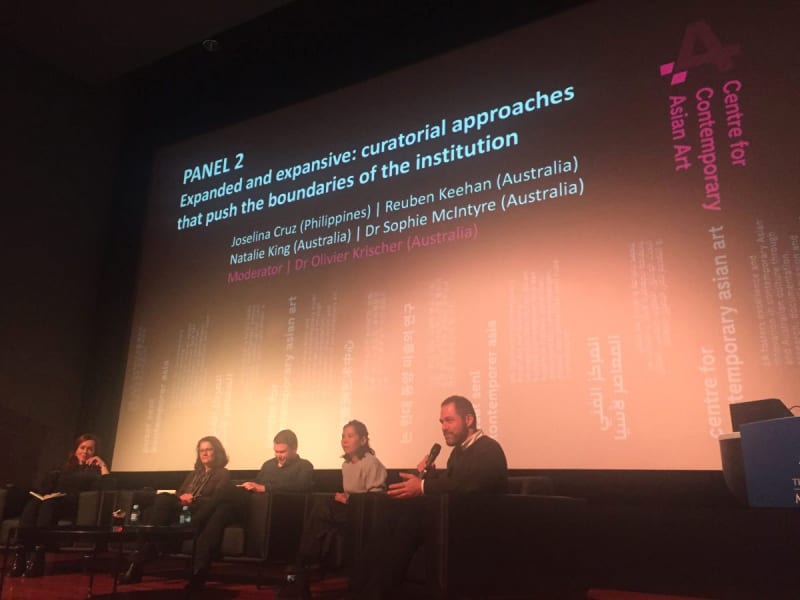[Excerpt from Symposium panel discussion: This is how we do it: museums and galleries in Asia)
The future is female… and this is how WE do it! The future of the museum has arrived: feminism as a tool in reimagining a collection.
Joselina Cruz, Director of Manila’s Museum of Contemporary Art & Design (MCAD), began her focus presentation with two moments that touch upon curatorial practice—seeing and engaging with space. Cruz located her curatorial rationale within an understanding of the ‘fragmented global’ and of spoke of the importance of what ‘challenges our ability to think about how localities across the globe and how they continually reinvent and engage the larger global narrative in a continual flow of negotiation … to jump across and cross both temporal and historical fences.’
Cruz presented three fascinating case studies that illuminated this contention further, however, it was her discussion of Pacita Abad: A Million Things to Say, a major solo exhibition of work by the late Filipino artist (1946–2004) that was presented at MCAD earlier this year and was co-curated by Cruz and the artist’s nephew Pio Abad, that revealed a compelling methodological approach of a museum exhibition. Cruz noted that for Abad, being female, a woman of colour and possessing an assertive and vibrant persona often created tension within the Manila art community especially and, as a result, Abad and others felt that during her lifetime she not taken seriously as an artist within the Philippines. Given this, Cruz expanded on how she felt Abad’s work required re-evaluation, especially in order to create a space for appraisal and criticality that is beyond the self-orientalisation the artist was commonly pigeonholed as engaging in. As Crux explained, this enterprise was a huge undertaking. Abad produced over 5,000 works including a series of masks inspired by African forms. Cruz spoke to the masks in particular to point out that this was a type of appropriation; however, she noted that Africa has historically been appropriated by white culture, so this in many ways is a curious thing to consider as a woman of colour.
According to Cruz, Abad is part of an historical moment in the Philippines, responding to local political trauma ‘by creating paintings about events taking place elsewhere.’ Abad painted the lives of refugees and displaced people, and Cruz described her as being ‘affected by their plight but separate from their fate and destiny. The ease of her diasporic existence was her estrangement from theirs, again the personal is highly political.’ It is within this reimagining of the curatorial framework that Cruz cut through the historical, to present the complexity of global culture in the local, through the work of Abad as a contemporary experience. Cruz centred the female figure as her curatorial methodology and the result that produced speaks to the enormity of the challenges faced by women, not only in the Philippines but at a global level.
Cruz’s work with the Pacita Abad exhibition can perhaps be best understood through curatorial theorist Elke Krasny’s use of feminist curatorial methodologies, wherein the application of binaries and dichotomies are part of the ‘politics of location’ (2). What Cruz was in fact touching on in the presentation of Abad’s work was the broader issue of what Krasny suggests about the binaries we often refer to in seeking the gaps, always to find that power is either afforded to one side or the other. Through her curatorial practice, Cruz ultimately reveals a narrative that underscores the multitudes of ways we experience imbalances in power, and with that invoked a subversive critical commentary on global issues.
